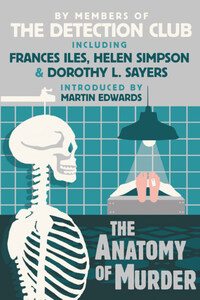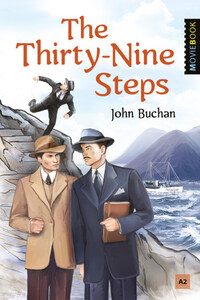HarperCollinsPublishers
77–85 Fulham Palace Road
Hammersmith, London w6 8JB
www.harpercollins.co.uk
This edition published 2014
First published in Great Britain by John Lane, The Bodley Head 1936
Copyright © The Detection Club 1936, 2014
All rights reserved under International and Pan-American Copyright Conventions. By payment of the required fees, you have been granted the nonexclusive, nontransferable right to access and read the text of this e-book on-screen. No part of this text may be reproduced, transmitted, downloaded, decompiled, reverse-engineered, or stored in or introduced into any information storage and retrieval system, in any form or by any means, whether electronic or mechanical, now known or here in after invented, without the express written permission of HarperCollins e-books.
HarperCollinsPublishers has made every reasonable effort to ensure that any picture content and written content in this ebook has been included or removed in accordance with the contractual and technological constraints in operation at the time of publication.
Source ISBN: 9780007569687
Ebook Edition © MAY 2014 ISBN: 9780007569694
Version: 2014-07-14
BY MARTIN EDWARDS
THE DETECTION CLUB was established in 1930 thanks to the initiative and drive of Anthony Berkeley, who wanted to create a social network of the leading detective novelists of the day. Berkeley was fascinated by criminology, as were many of his colleagues, and discussion about real life murder cases was a feature of Detection Club meetings. The prospect of playing detective themselves enthralled Club members, and they loved to discover and debate new angles on famous crimes, whether or not they had officially been “solved”.
The Club funded its dinners, and the cost of renting premises at 31 Gerrard Street, Soho, through ventures such as the “round-robin” mysteries Behind the Screen and The Scoop, and the collectively produced novels The Floating Admiral and Ask a Policeman. The Club’s leading lights were restless innovators in their fiction, and they liked to avoid repeating themselves. Given their shared interest in true crime (one illustration among many is the fact that the macabre Crumbles bungalow murder of 1924 provided raw material for The Scoop), it was almost inevitable that they should decided to put together a book of essays about intriguing cases. The highly successful result was The Anatomy of Murder, published in 1936.
Nobody is named as editor of the book, but it seems that Helen Simpson took on the job of liaising with the publishers and collating the essays, as well as writing one herself. The short Foreword reflects an ambitious approach characteristic of the Club’s projects. The writers were not content simply to recount the facts of their cases. They aimed to add value by including new information, making use of modern investigative techniques, or by seeking to examine the psychology of the characters in the story.
In “Death of Henry Kinder”, Simpson re-examined a nineteenth century case in which “the assassin had at one time some notion of dressing the part, and purchased a red Crimean shirt, on which bloodstains would not be conspicuous; but the crime itself was committed … in the ordinary sombre undress of a dentist.” Kinder lived in Sydney, and the essay begins with a short discussion about crime in Australia. Helen de Guerry Simpson was herself born in Sydney in 1897, 32 years after Kinder met his end. Her father was a solicitor, her grandfather a French marquis, and after her parents separated, she and her mother moved to Europe. She attended Oxford University, and was a co-founder of the Oxford Women’s Dramatic Society, but was sent down for breaking university rules which banned male and female students from acting together. She became a prolific author, producing poetry, plays, translations and short stories as well as novels such as Acquittal, and contributed dialogue to Hitchcock’s film Sabotage. In 1927 she married fellow Australian Denis Browne, a surgeon whose uncle wrote Robbery under Arms, using the pen-name Rolf Boldrewood, name-checked in the first sentence of “Death of Henry Kinder”.
Simpson’s major contribution to detective fiction was the three books she co-wrote with Clemence Dane, also a Detection Club member. The first, Enter Sir John, was filmed by Alfred Hitchcock as Murder! Writing solo, she produced in 1931 an unusual and eccentric crime novel, Vantage Striker (re-titled The Prime Minister is Dead when published in the US), and achieved both commercial success and literary acclaim with her non-criminous novel








